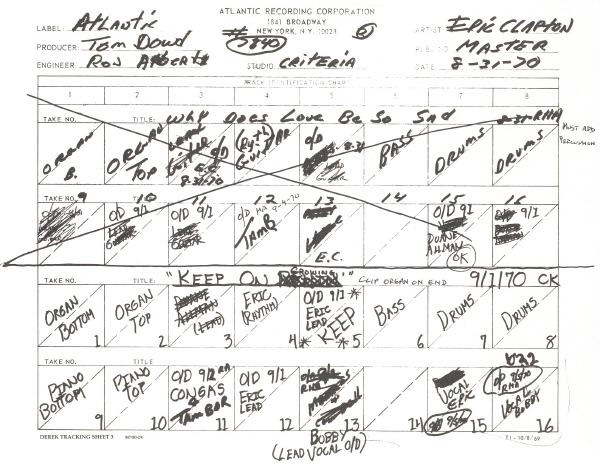I think you've highlighted one of the most interesting things for me with quad mixes versus there stereo counterparts, and that is when things are different - either in terms of mix balances (like if an instrument or vocal is way more or less prominent) or runtime. Obviously if things you're expecting to be there are missing, it can be a bit dismaying like this case.
These "linkages" you reference are indeed missing on the quad 8 track too, so it's no historical revisionism on Dutton Vocalion's part. When these quad mixes were done, the only delivery format they were intended for was Q8, so they were often mixed and/or sequenced with Q8 playback mind - some of the master tape boxes for these early RCA quad mixes (which I've seen) from the
"PQ8" series actually even mention that the mixes are for the "Quad 8" release.
Because Q8's had two 4-channel programs (as opposed to four 2-channel programs on a stereo 8-track) they required twice as much physical tape for the same runtime. So take
Canned Wheat for example - the quad program is 41 minutes of actual music, and throw in, say, 3 seconds of silence between tracks (x 10 gaps) which adds another 30 seconds...a 41:30 Q8 has as much tape in it as a stereo tape that has 83 minutes of music on it, and if you add in the missing 70 seconds of excised "linkages" in, you're getting up near 86 minutes of stereo play time which is near the physical capacity of an 8-track tape. So my nutshell educated guess is that the album was simply too long to fit on a Q8 tape, and rather than omit a track, they cut down a few intros/outros so all the songs could fit on the tape, rather than omitting one of the tracks altogether, which is what the Japanese CD-4 LPs of
American Woman and
Canned Wheat did. I'm sure there were also minor financial concerns at play, both from the perspective of shorter tapes costing the label less money in tape stock, and also shorter tapes being less prone to breaking/jamming meant less returns/refunds from unhappy customers. Additionally, forum member
@Q-Eight wrote to Guess Who producer Jack Richardson some years ago (you can probably find the post using the search box) and he claimed that the quad mix of
So Long, Bannatyne was abandoned because they realized that the album (which runs nearly 48 minutes plus silent gaps) was too long to fit on a Q8 cartridge, so it definitely seems like the constraints of the format were on their mind at the time. Sadly, this kind of butchery with Q8 tapes wasn't uncommon at all - there are a ton of examples of it, from tracks being edited (like the 20 seconds of missing guitar solo in
Lazy on the UK mix of Deep Purple's
Machine Head) to being cut in half with "part one" fading out on the end of program 1 and "part 2" fading back in at the beginning of program 2 (like
Money on Pink Floyd's
Dark Side of the Moon) to track orders being changed (so that the runtime of the 2 programs of the tape were approximately equivalent and there wasn't a long silent gap at the end of one side) to intros and outros being chopped off, like you've highlighted with this Guess Who album. I think the labels viewed the LP as the "genuine article" and with 8-track tapes they felt that people were willing to accept sacrifices like these to the integrity of the music for the benefits the tape cartridge offered, like being able to listen to music in your car, for example.
As for
Flavours, as good an album as it is (and I really enjoy the latter-day Guess Who, I think
Road Food is now my favourite album) I hate to be the bearer of bad news but the quad mix is a fake, upmixed from stereo simply by putting a delayed version of the stereo mix in the rear speakers along with (if I remember correctly) a little more treble emphasis on the front channels. The same goes for
Power in the Music and
Artificial Paradise unfortunately, which is a shame, I think they all had a lot of potential from a surround mix standpoint.















